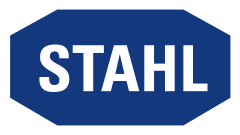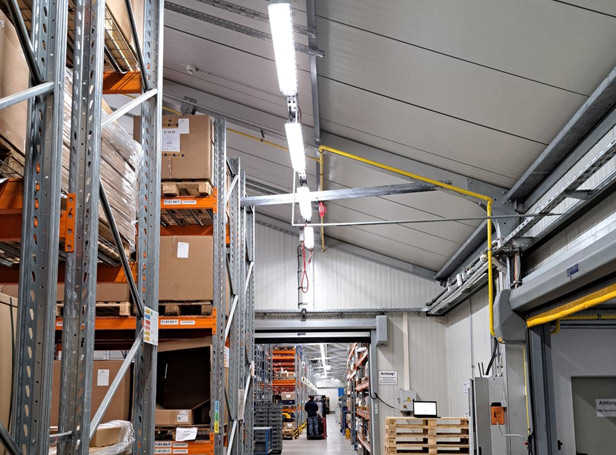Fieldbuses are still not fully accepted in the process industry. When they were first launched in the 1990s, the complexity of installation and maintenance was underestimated in particular. The developers of Ethernet-APL have learned many lessons from this – and come up with a technology which is helping digitalisation of the field level achieve a breakthrough.
In the 1990s, the introduction of fieldbuses like Profibus and Foundation Fieldbus was heralded as a revolutionary step in the process industry. The idea behind these digital communication protocols was to promote automation and replace analogue signal transmission. But this enthusiasm soon waned, as the benefits that were promised did not materialise as hoped in practice. This is because the stakeholders involved underestimated the technical complexity – which is why it wasn't very popular among users either. Today, Ethernet-APL marks a significant technological milestone in the industry, but this time the mistakes of the past are not to be repeated. The fieldbus technologies of that time offered impressive features but failed in many areas where it mattered.
Mistake 1: Complexity of installation and maintenance
The beginnings of fieldbus technology in the process industry were characterised by a whole jumble of competing systems: Profibus DP and PA, Foundation Fieldbus, as well as Modbus, Interbus and World FIP, promised to reduce the cabling work by using a single bus. However, the reality was far more complicated. This variety led to confusion and compatibility issues – while the splintering of the market didn't make things any easier. What's more, in practice it became apparent that planners and operators often greatly underestimated the effort involved in planning and installation. For error-free installation, the engineers had to acquire in-depth technical comprehension of the new systems. What's more, the poor documentation of the cabling often caused problems with trouble-shooting and maintenance.
Mistake 2: Significant training requirements and lack of knowledge
Fieldbus systems called for specialist knowledge that simply wasn't available in many companies and systems. While it didn't take anyone long to learn how to operate the long-established analogue 4 to 20 mA technology, digital fieldbus technology wasn't intuitive to use. The training requirements for employees were huge and many of them were overwhelmed by the new technology. This often led to mistakes when operating and maintaining systems, which made the technology even more unpopular among engineers.
Mistake 3: Lack of flexibility
Another issue was the rigid architecture of the fieldbuses. Expanding or adapting the systems often proved to be complex and expensive, which put many companies off investing in this technology. Particularly in a time when flexibility and scalability were becoming increasingly important, these limitations represented a significant drawback.
Mistake 4: Insufficient diagnostics functions
Although fieldbuses offered advanced diagnostics functions in theory, it was often hard to access this information. Users had to use special tools and software to locate errors, which extended the response time in the event of malfunctions and delayed operation unnecessarily. And that's not all – diagnostics were usually reactive, meaning that problems were not detected until they had already reached a critical stage.
Mistake 5: Lack of standardisation
The competition between different fieldbus protocols led to uncertainty in the industry. There was a lack of standardisation that would have enabled companies to agree on one system. This was an additional obstacle to fieldbus technology becoming established.
ETHERNET-APL: LESSONS LEARNED, FUTURE SECURED
With Ethernet-APL (Advanced Physical Layer), a new technology designed to avoid all of these mistakes is ready. The development of Ethernet-APL is based on the lessons learned from the failures of fieldbus technologies and has the potential to transform the process industry with lasting effect.
Benefit 1: Simpler installation and greater range
Ethernet-APL is an internationally standardised 2-wire solution based on the IEEE 802.3 10BASE-T1L standard. This means that it builds on a familiar and successfully established technology which makes it possible to connect field devices up to a distance of 1000 metres. At the same time, it provides power to these devices – making things much easier especially for large-scale systems in the process industry. The type A cables currently used for fieldbus installations can continue to be used. This minimises the work required for existing systems and makes switching over to Ethernet-APL particularly appealing.
Benefit 2: Minimised training requirements
A major benefit of Ethernet-APL is the reduced training requirements. Since the technology is based on Ethernet – a well-established and familiar technology – users already have an understanding of this network technology. This makes it far easier to provide training relating to Ethernet-APL and to use it.
Benefit 3: Flexibility thanks to different network topologies
Star or trunk topology
Ethernet-APL makes it possible to set up two different types of networks: The star topology, which is typical of Ethernet, or the trunk-and-spur technology. This flexibility makes it possible to adapt the network infrastructure to the specific requirements of each system. The strengths of trunk-and-spur technology come to the fore in large-scale systems in particular, as its range extends up to 1000 metres. Both versions use switches – in the second case a power switch, which converts the 4-wire network into a 2-wire network and supplies the Ethernet-APL network with power via the trunk wire. Both options also use a field switch, which can be installed up to Zone 1 and provides the connected field devices with intrinsically safe power.
Ex i verification simplified
Since with Ethernet-APL each field device is connected to a defined cable, it's far simpler to provide verification of Ex i, as is required in process plants, based on the newly established IEC TS 60079-47 standard (2-WISE, 2-Wire Intrinsically Safe Ethernet). What's more, existing fieldbus devices with intrinsic safety in accordance with FISCO (IEC 60079-11) can continue to be used if, for example, the field switches used have a PA proxy for connecting PROFIBUS PA devices.
Keeping what works: Combination with remote I/O
Adding Ethernet-APL to existing installations is an appealing possibility, as it means that basic I/O signals for which there is no APL interface can continue to be used. An Ethernet-capable remote I/O system makes it possible to connect existing 4 to 20 mA field devices, also with HART, or contacts and valves to the same digital Ethernet network in which the field switches are installed.
Safety via Ethernet-APL
Another characteristic that sets Ethernet-APL apart from traditional process fieldbus systems is how functional safety is considered: Ethernet-APL as a physical layer supports safety-relevant protocols like PROFIsafe and CIP Safety. This enables secure (SIL) and non-secure topologies to be set up in the same way and even mixed. The prerequisites for this are compatible field devices and automation systems. The Ethernet-APL field switches function as a grey channel, which means that they can be used both for safety critical and non-safety critical applications.
Benefit 4: Advanced diagnostics functions
One of Ethernet-APL's most impressive characteristics is its advanced diagnostics function. APL switches make it possible to monitor the network and the connected devices in real time for the occurrence of communication problems or physical layer errors. This way, malfunctions or deviations due to ageing network cables or cable breaks can be detected immediately and maintenance teams can take targeted action to prevent failure. Diagnostic information is displayed locally at the switch, a feature which makes this technology far more popular among system operators.
Benefit 5: Uniform standards and interoperability
Ethernet-APL was designed to be an open and interoperable solution from the very start. Unlike the fieldbus protocols of the 1990s, the development of Ethernet-APL is a joint effort on the part of leading manufacturers of control systems, field devices and infrastructure. FCG, ODVA, OPC Foundation and PI, which are key technology businesses, supported the development and are now responsible for its marketing and continued development.
CONCLUSION: ETHERNET-APL – A SOLUTION WITH POTENTIAL
The introduction of Ethernet-APL represents the next major step in the digitalisation of the process industry. By combining the use of a successfully established technology like Ethernet with the requirements of process automation, Ethernet-APL provides a simple, reliable and future-proof solution. When developing Ethernet-APL, a conscious effort was made to avoid repeating the mistakes that occurred when launching fieldbuses – such as complex installation, a lack of flexibility and inadequate diagnostics functions. By digitising the field level, Ethernet-APL is taking process automation to a whole new dimension.
Further Reading:
These articles might also interest you

What Asset Administration Shells Deliver for Maintenance






![[Translate to Englisch:] [Translate to Englisch:]](/fileadmin/user_upload/mitarbeiter/01_DE/07_Blog/00_Allgemein/blog-explosionsschutz-rstahl-startseite-279x205.jpg)
![[Translate to Englisch:] [Translate to Englisch:]](/fileadmin/user_upload/mitarbeiter/01_DE/07_Blog/00_Allgemein/blog-explosionsschutz-rstahl-ueber-den-blog-279x205.jpg)
![[Translate to Englisch:] [Translate to Englisch:]](/fileadmin/user_upload/mitarbeiter/01_DE/07_Blog/00_Allgemein/blog-explosionsschutz-rstahl-autoren-279x205.jpg)
![[Translate to Englisch:] [Translate to Englisch:]](/fileadmin/user_upload/mitarbeiter/01_DE/07_Blog/00_Allgemein/blog-explosionsschutz-rstahl-newsletter-expert-mail-279x205.jpg)
Write new comment